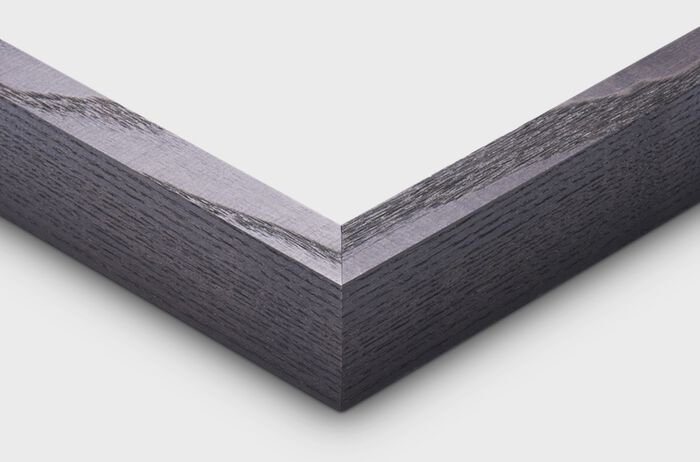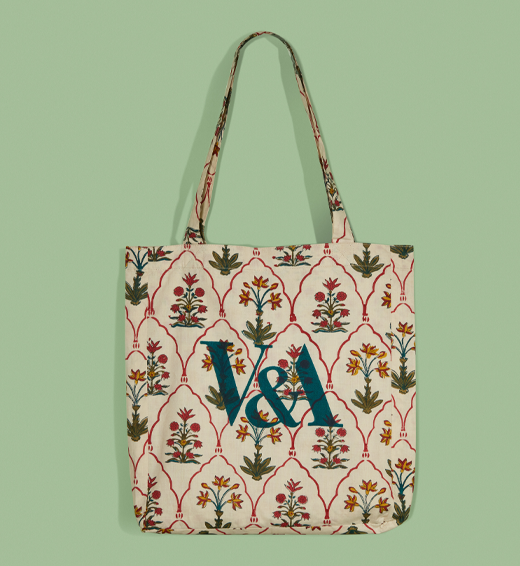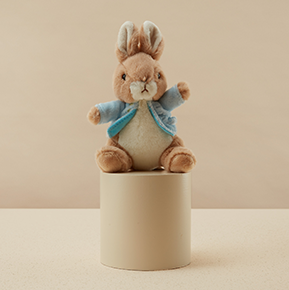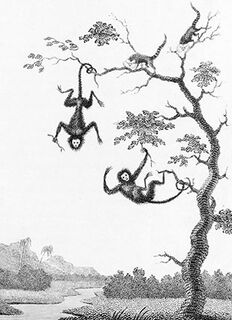- Details
- Delivery & Returns
- About custom prints
The Quato & Saccawinkee Monkeys
Print by William Blake (1757-1827)
England, 1796
The Scottish-Dutch soldier John Gabriel Stedman witnessed the brutal oppression of slaves which he described in his Narrative of a Five Years Expedition Against the Revolted Negroes of Surinam, a book illustrated by William Blake. This image by Blake stands out amongst Blake's illustrations for Stedman's Narrative. It is possible that Blake may have intended the monkeys to have satirical intent.
Custom printed on 280gsm smooth matte fine art paper.
Delivery
Our standard delivery charges and estimated timescales are as follows. Selected product exceptions apply; see product details. International deliveries may also be subject to customs fees or taxes upon arrival, which are your responsibility.
Custom prints
Each print is made to order and dispatched separately to other V&A Shop products, for UK delivery only. The charges and estimated timescales below are in addition to our standard delivery charge when bought together with a V&A Shop product. However, delivery is free for all orders over £60.
Returns
We hope you are happy with your V&A Shop purchase. However, if you are not, most items are eligible for a full refund, subject to the criteria below. Refunds are offered for items in an unused, unopened condition, and with original packaging – with the following exceptions. This does not affect your statutory rights.
The following items are excluded from our returns policy and cannot be refunded unless faulty, damaged, or not as described:
- Custom prints and other items made to your specification or personalised;
- Items that have been sealed for hygiene reasons, where the seal has been broken, such as beauty products, soap, pierced earrings, hosiery, socks, sunglasses and face coverings;
- Perishable or edible items such as flowers or food;
- Memberships, tickets for exhibitions, bookings for events and courses.
For full details, visit our Delivery & Returns page.
From our gallery walls to yours
High quality art prints of images from across the V&A collections. Spanning Japanese woodblock prints to book illustration, textile designs and photography this collection of prints offers a glimpse into the rich and diverse nature of the V&A.
Made in England on the Sussex coast by leading print producers King & McGaw, our prints are hand finished and framed by skilled craftsmen using responsibly sourced materials, carefully packaged and delivered directly to your door.
The process is simple:
1. Select an image
2. Choose your preferred size and frame
3. Place your order!
Additional details
PAPER:
We use fine art paper sourced from UK paper mills for our prints. The paper type has been chosen to best suit the original artwork.
INKS:
Each artwork is giclée printed using archival quality inks.
MOUNT:
Acid free, extra thick smooth white mount board with a white core.
GLAZING:
We use clear acrylic glazing for safety and longevity.
FRAMING:
Framed by hand in Sussex by skilled craftsmen using responsibly sourced materials, the finished product has a taped back and is supplied ready to hang.
PACKAGING:
Each print is carefully packaged to ensure safe transportation, using 100% recyclable materials.
COPYRIGHT:
Please note that a copyright line is included under the image.
The Quato & Saccawinkee Monkeys
Paper size
Please select-
Small
23 x 30 cm
-
Medium
31 x 40 cm
-
Large
47 x 60 cm
Frame type
Please select-
 Black
Black -
 White
White -
 Natural
Natural -
 Unframed
Unframed
- 1.5 cm black stained ash box frame - stained and waxed
- 280gsm smooth matte fine art paper
- cm white mount - acid free, extra thick smooth white mount board with a white core
- Printed image size:
- Total framed size:
- Total size:
William Blake
William Blake was born in 1757 into an ordinary middle class family in London, and died in 1827, at the age of sixty-nine. He lived in London for most of his life and the city played a central role in shaping his life and ideas. Although Blake worked non-stop right up until his death producing a remarkable body of work, he was not appreciated during his lifetime and lived much of his life in poverty. He spent his final years in a squalid two-room flat and was buried in an un-marked grave.









